Software Processes in Software Engineering
Overview
Software processes in software engineering serve as the foundational framework for designing, developing, testing, and maintaining software systems efficiently. These structured methodologies provide a systematic approach, ensuring organized project management, clear communication, and high-quality output. They orchestrate the complex journey of turning concepts into functional digital realities, enhancing collaboration, reducing uncertainties, and optimizing resource allocation from inception through deployment and beyond.
Common models, including Waterfall, Agile, and DevOps methodologies, offer different perspectives to customize and refine these processes, aligning them with project intricacies. DevOps, for example, integrates development and operations, promoting continuous integration and delivery. The interplay of these methodologies forms the core of efficient software craftsmanship, nurturing teamwork and yielding sophisticated, forward-looking outcomes amid the ever-evolving technological landscape.
Note:
- The choice of software process model depends on a number of factors, such as the size and complexity of the project, the availability of resources, and the preferences of the development team.
- It is important to adapt the software process model to the specific needs of the project. There is no one-size-fits-all approach.
- It is also important to continuously monitor and improve the software process. This can be done by collecting feedback from stake.
Examples of Software Processes
Software processes, often referred to as Software Development Life Cycle (SDLC) models, provide a structured approach to design, develop, test, and maintain software applications. These processes help teams manage and control the various stages of software development. Here are some commonly used software processes:
-
Waterfall Model:
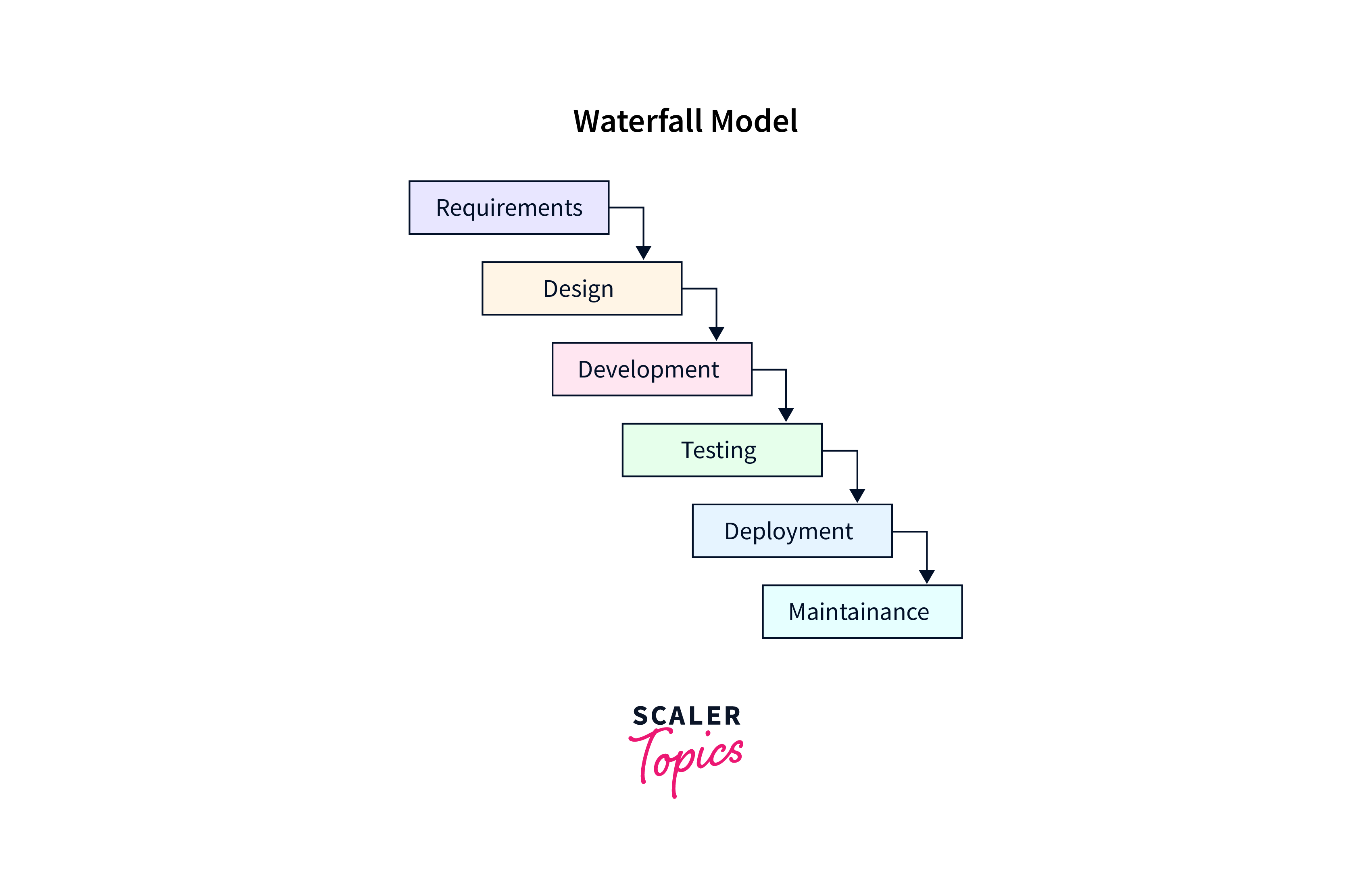
A linear approach where phases (requirement gathering, design, implementation, testing, deployment) follow a strict sequence. Offers clear structure but struggles with changes post-phase completion, best suited for straightforward projects.
- Phases: Requirement gathering → System design → Implementation → Integration → Testing → Deployment → Maintenance.
- Advantages: Clear structure, well-defined stages, easy to manage.
- Disadvantages: Difficult to make changes once a phase is complete, not suitable for complex or evolving projects.
-
Incremental Model:
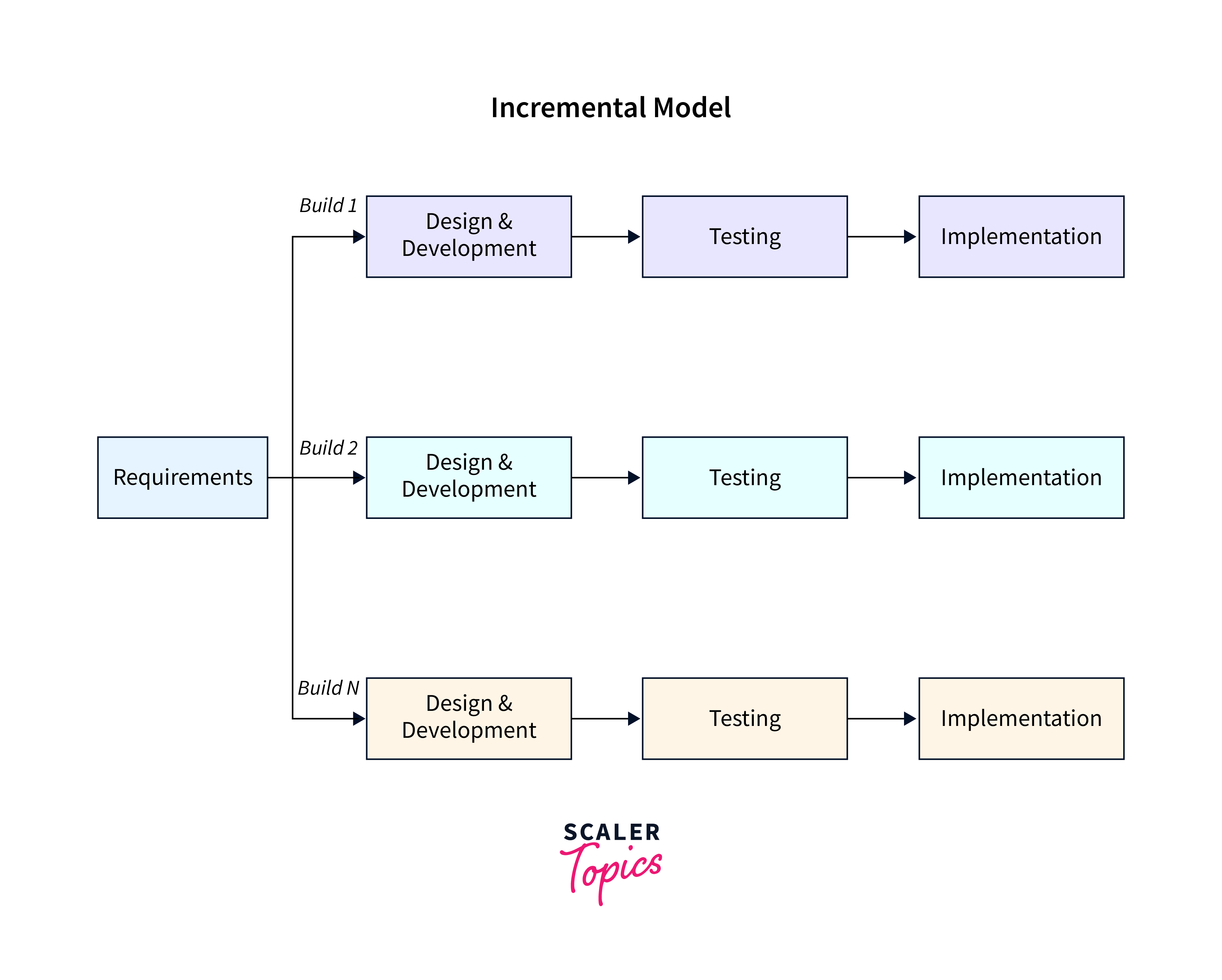
Software developed in segments following the Waterfall phases, allowing for early deployment and adaptable changes. Requires stable requirements for optimal outcomes.
- Phases: Same as the Waterfall model but repeated incrementally.
- Advantages: Early partial deployment of the software, better feedback and adjustment to requirements.
- Disadvantages: Needs clear and stable requirements for the best outcomes.
-
Iterative Model:
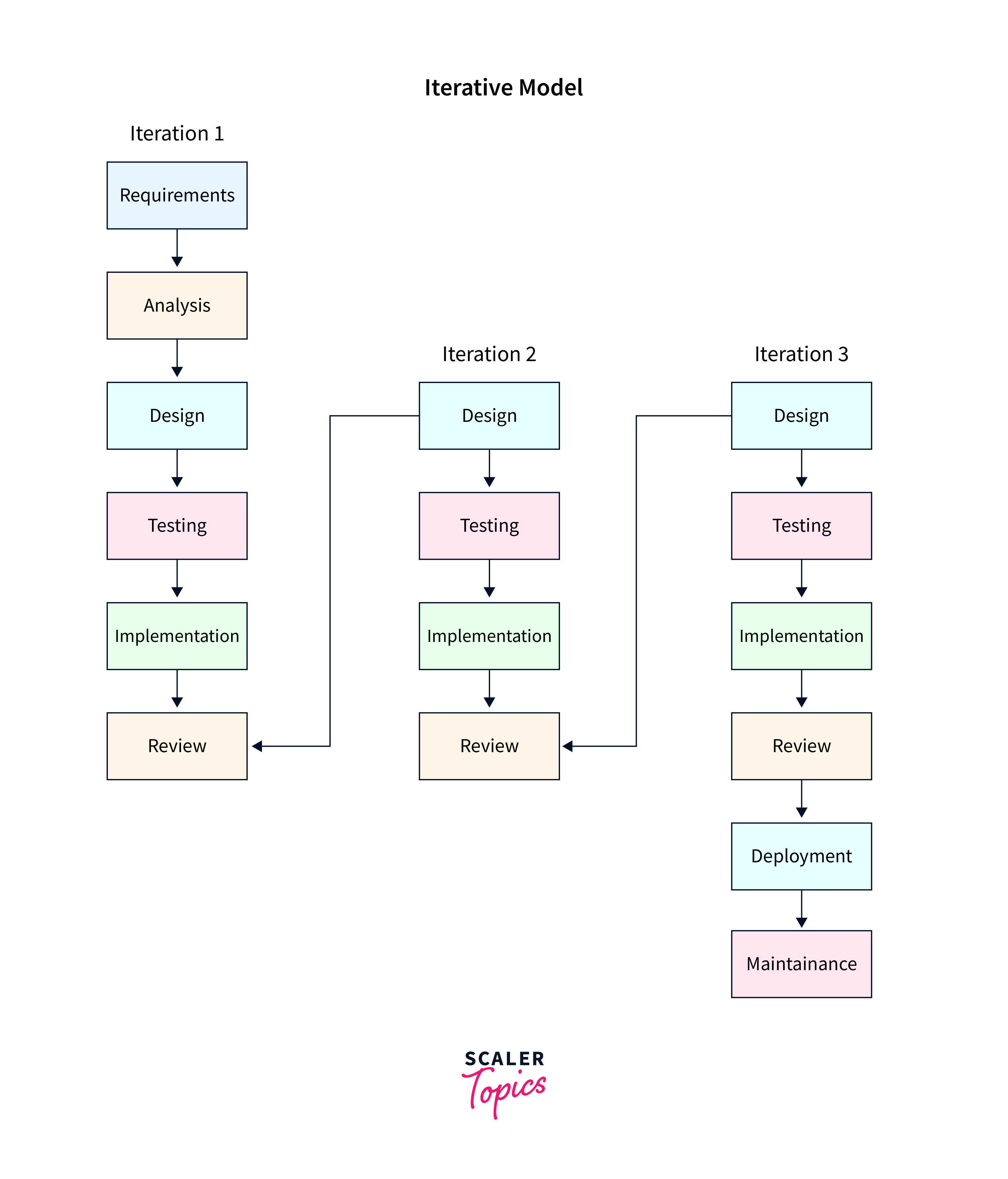
Cyclic development with initial implementation followed by iterations for refining and enhancing. Supports flexibility and progress through well-defined iterations.
- Phases: Initial implementation → Iterative development → Iterative design and implementation.
- Advantages: Allows refinement through iterations, more flexibility in design and development.
- Disadvantages: Can be difficult to manage if iterations are not well-defined.
-
Agile Model:
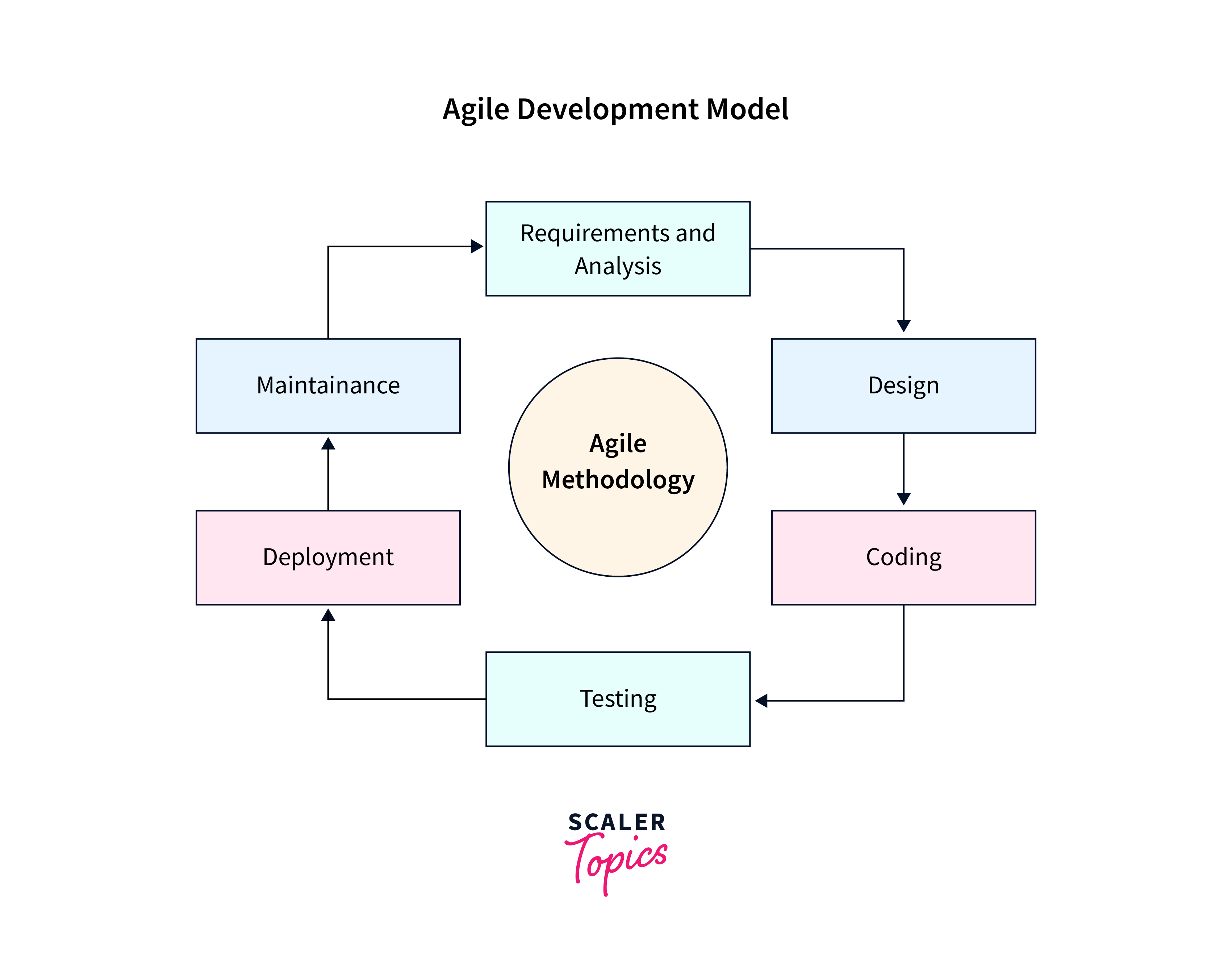
Promotes collaboration, quick iterations (planning, design, development, testing, review, deploy). Offers flexibility, faster delivery of features, but less emphasis on documentation.
- Phases: Planning → Design → Development → Testing → Review → Deploy.
- Advantages: High flexibility, faster delivery of small features, better collaboration and communication.
- Disadvantages: Less emphasis on documentation, needs experienced team members.
-
V-Model (Validation and Verification):
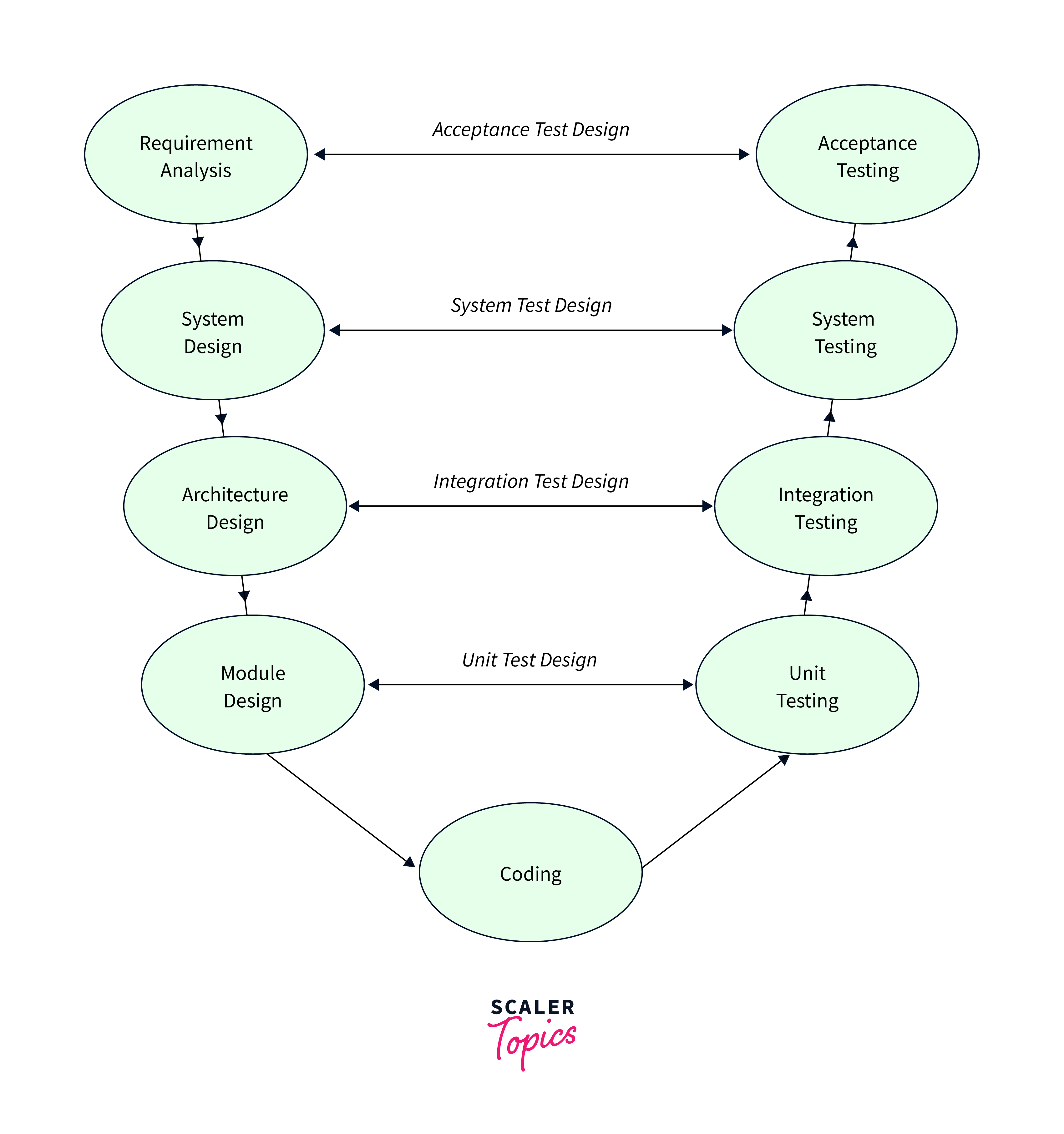
Aligns development stages with corresponding testing phases for robust validation and verification. Less flexible but ensures software quality.
- Phases: Requirements → System design → Architecture design → Module design → Coding → Unit testing → Integration testing → System testing → Acceptance testing.
- Advantages: Emphasis on validation and verification, ensures high software quality.
- Disadvantages: Less flexibility, changes are costly.
-
Spiral Model:
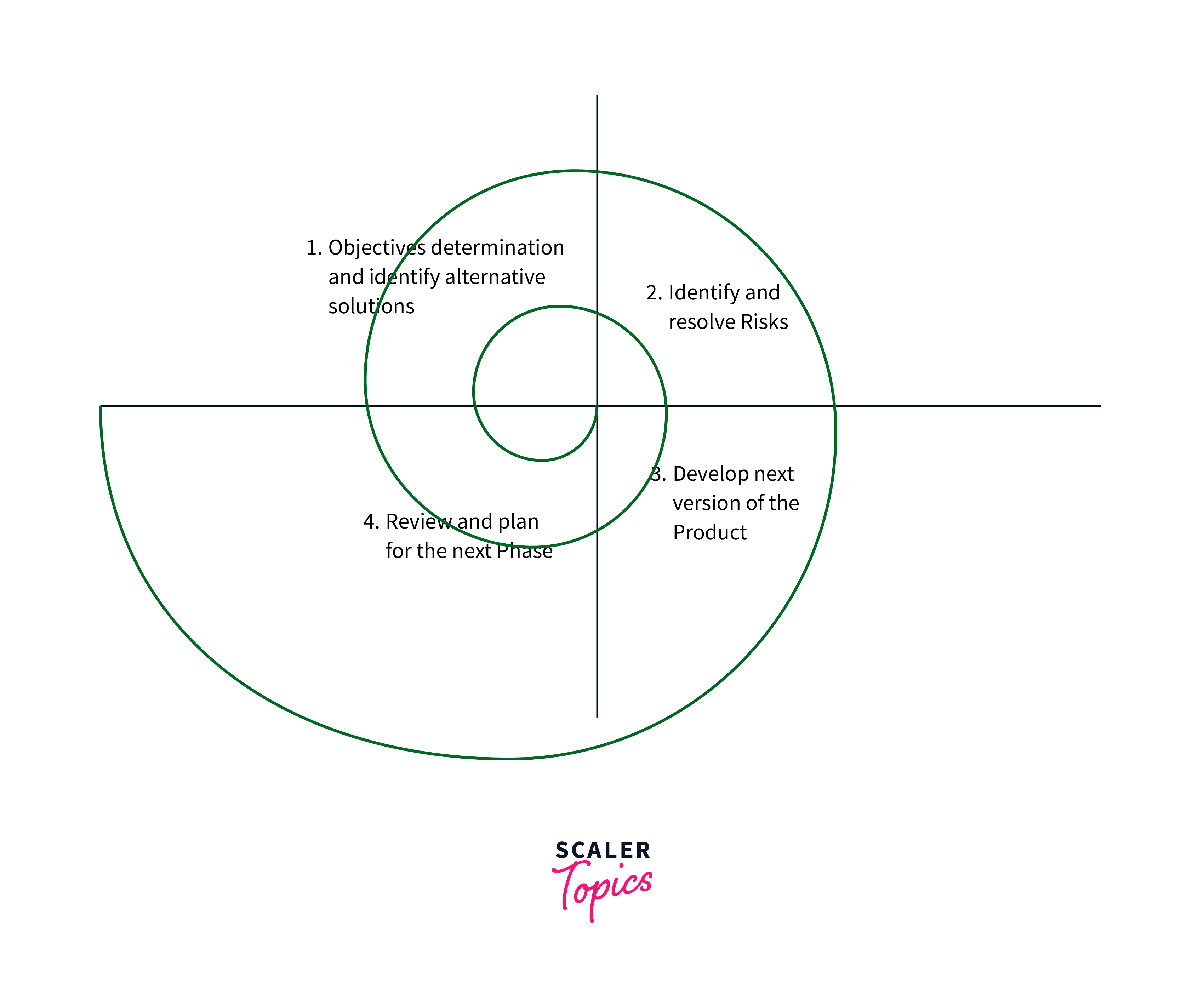
Prioritizes risk assessment and iteration (planning, risk analysis, engineering, evaluation). Highlights risk management, iterative approach, demanding risk expertise.
- Phases: Planning → Risk analysis → Engineering → Evaluation.
- Advantages: Strong emphasis on risk management, iterative approach.
- Disadvantages: Can be complex, requires expertise in risk management.
-
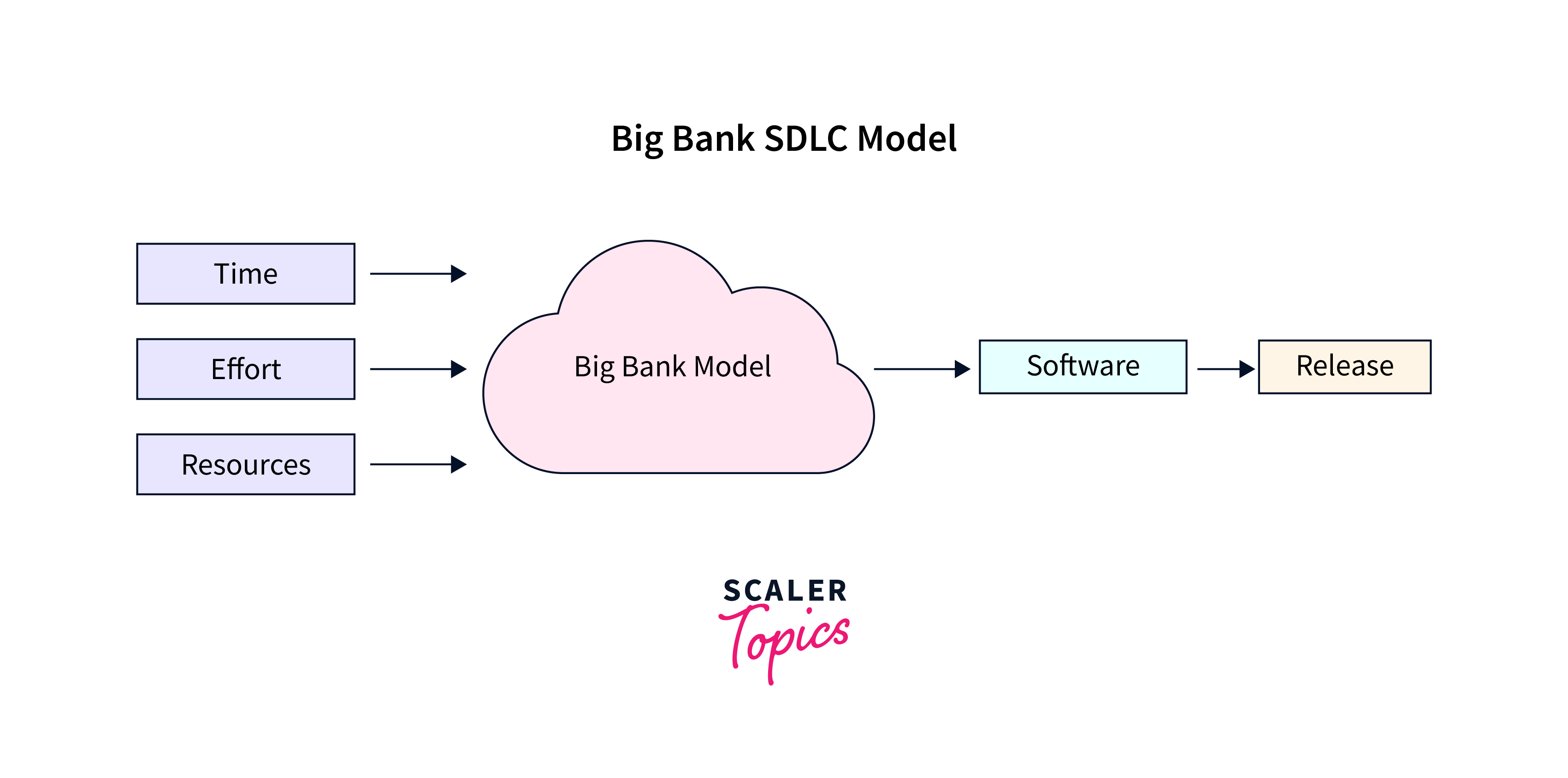
Lacks specific processes; development starts broadly, evolves with improvisation. Provides flexibility but carries unpredictable outcomes and resource risk.
- Phases: Informal development → Testing/Release.
- Advantages: High flexibility, allows for creativity.
- Disadvantages: Unpredictable outcomes, potential for wasted resources.
-
RAD (Rapid Application Development):
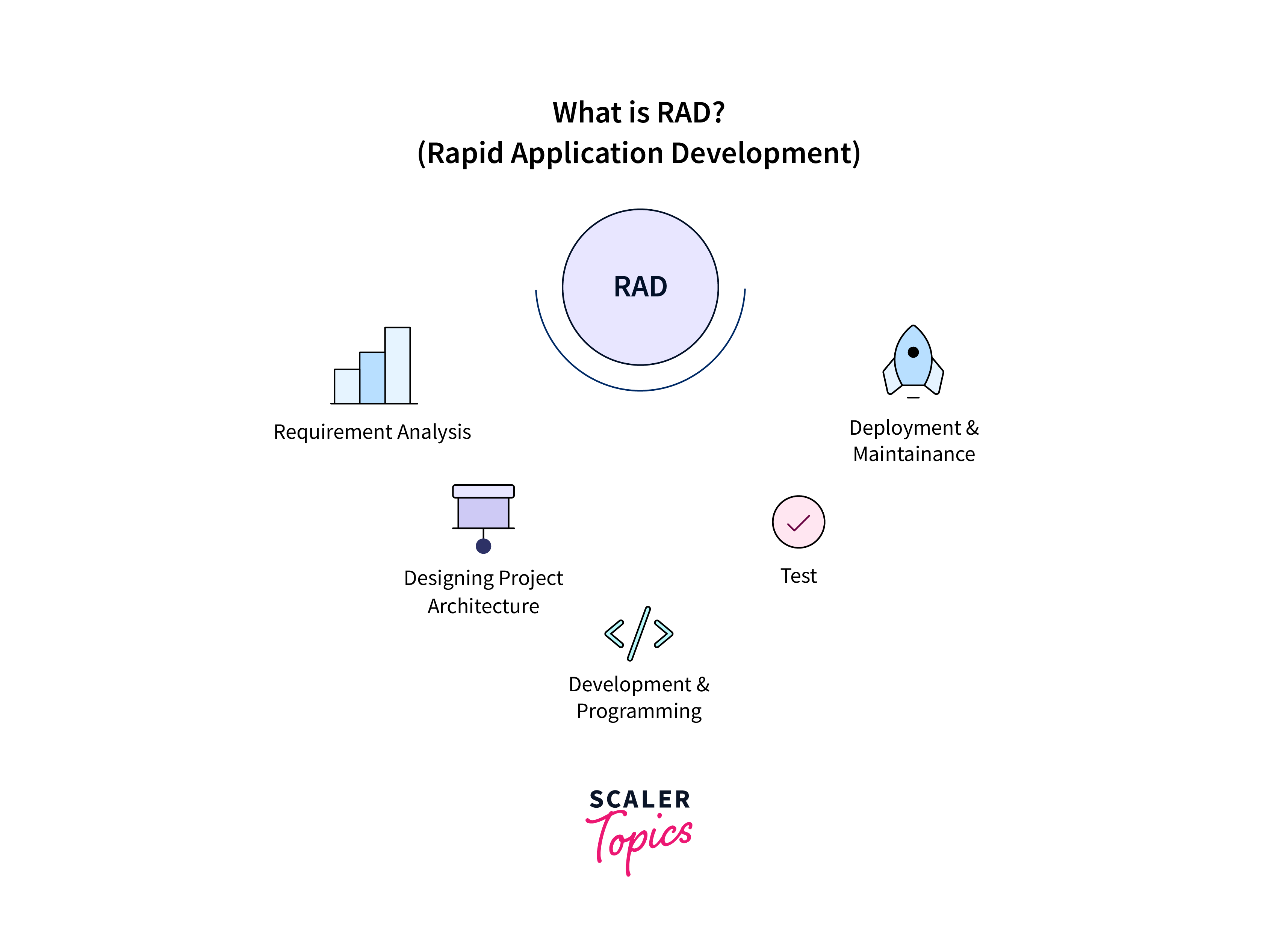
Emphasizes rapid prototyping, user feedback (planning, user design, construction, cutover). Favours faster development with high user involvement, requires skilled developers.
- Phases: Planning → User design → Construction → Cutover.
- Advantages: Faster development, high user involvement.
- Disadvantages: Requires highly skilled developers, not suitable for larger projects.
-
Scrum Model(a subset of Agile):
Iterative, incremental approach with sprints (sprint planning, daily stand-ups, sprint demo, retrospective). Fosters collaboration, adaptability, but necessitates disciplined teams and scaling consideration.
- Phases: Sprint planning → Daily stand-ups → Sprint demo → Sprint retrospective.
- Advantages: High collaboration, adaptability to changing requirements.
- Disadvantages: Requires disciplined teams, can be challenging to scale.
The Software Process Model
The Software Process Model, also known as the Software Development Life Cycle (SDLC), is a systematic approach that outlines the stages and activities involved in the creation, development, and maintenance of software applications. It serves as a framework to guide software development teams in effectively and efficiently producing high-quality software products. Different process models exist, each with its own set of stages and activities, but they generally follow a similar structure. One of the most common process models is the Waterfall model, which I'll use to explain the typical stages:
-
Requirements Gathering and Analysis:
In this initial phase, developers work closely with stakeholders (clients, users, or product owners) to understand the software's purpose, scope, and functionalities. The requirements are documented, analyzed, and prioritized to create a clear project roadmap.
-
System Design:
Based on the gathered requirements, the system architecture and design are created. This phase outlines how the software components will interact, what technologies will be used, and how the user interface will be designed. This stage is critical for planning and ensuring that the system will meet the intended goals.
-
Implementation:
In this stage, the actual coding and programming of the software take place. Developers write the code according to the design specifications. This phase includes both creating the core functionality of the software and handling any technical challenges that arise during development.
-
Testing:
After the software is coded, it undergoes rigorous testing. Quality assurance teams identify and rectify defects, errors, and issues that may arise during execution. Testing ensures that the software behaves as expected and meets the specified requirements.
-
Deployment:
Once the software passes testing and is considered stable, it is deployed to a production environment for end-users to access and utilize. Deployment involves configuring the software, setting up servers, and ensuring all necessary components are in place for smooth operation.
-
Maintenance and Support:
After deployment, the software enters its maintenance phase. This involves monitoring for any issues that may arise in the live environment, addressing user feedback, and making necessary updates or improvements. Regular updates and bug fixes are released to ensure the software remains reliable and up-to-date.
It's important to note that while the Waterfall model represents a linear sequence of stages, many modern software development methodologies, such as Agile, Scrum, and DevOps, have evolved to address some of the limitations of this traditional approach.
Software Crisis
The term Software Crisis refers to a historical period in the early days of computing when the development and maintenance of software systems faced significant challenges that led to concerns about the feasibility and reliability of software as a whole. This crisis emerged as a result of the rapid growth of computing technology and the increasing complexity of software applications. The concept of the Software Crisis highlights the difficulties and inefficiencies encountered during software development, leading to the exploration of new methodologies and practices to address these issues.
Key factors contributing to the Software Crisis:
-
Complexity:
As software systems grew in size and scope, their complexity increased exponentially. It became increasingly difficult to design, implement, and maintain software without encountering errors or bugs.
-
Lack of Formal Methods:
During the early days of computing, there were limited formal methods and tools available to aid in the design, specification, and verification of software systems. This lack of rigor often resulted in unpredictable behavior and errors in software applications.
-
Unreliable Software:
Many software projects of the time were plagued by frequent bugs, crashes, and malfunctions. This undermined user confidence in software systems and hindered the adoption of technology.
-
Inefficient Development:
The process of software development was often ad hoc and lacked structured methodologies. This led to missed deadlines, cost overruns, and unsatisfactory outcomes.
-
Rapid Technological Change:
The fast-paced evolution of hardware and software platforms further complicated software development. Compatibility issues arose as systems became outdated quickly.
-
Limited Resources:
Hardware resources were often scarce, and software developers had to work with limited computational power and memory, making it challenging to create efficient and optimized software.
Efforts to Address the Software Crisis:
-
Structured Programming:
Pioneered by Edsger Dijkstra, structured programming introduced the use of control structures like loops and conditionals to enhance code readability and reliability.
-
Modular Programming:
Breaking software systems into smaller, manageable modules helped reduce complexity, improve code reuse, and simplify maintenance.
-
Formal Methods:
Researchers started exploring formal methods for specifying, designing, and verifying software systems to ensure correctness and reliability.
-
Software Engineering:
The emergence of software engineering as a discipline emphasized systematic approaches to software development, including requirements analysis, design, testing, and maintenance.
-
Object-Oriented Programming:
This paradigm promoted the use of objects, encapsulation, and inheritance to model real-world entities and improve code organization.
-
Agile Methodologies:
In response to the rigidity of traditional software development practices, agile methodologies like Scrum and Extreme Programming (XP) were introduced, focusing on iterative development, collaboration, and adaptability.
-
Advancements in Tools and Languages:
The development of better programming languages, integrated development environments (IDEs), debugging tools, and version control systems contributed to more efficient software development processes.
Advantages of Software Process in Software Engineering
-
Consistency:
Software processes ensure consistent methods and practices throughout the development lifecycle, leading to higher quality and fewer errors.
-
Predictability:
Defined processes help in estimating project timelines, resource requirements, and potential risks more accurately, aiding project management.
-
Efficiency:
Well-established processes optimize resource utilization, reduce rework, and enhance productivity by eliminating redundant efforts.
-
Quality Improvement:
By following a structured process, defects and errors are detected and corrected early, resulting in improved software quality.
-
Traceability:
Processes allow for proper documentation and tracking of changes, making it easier to identify and manage modifications throughout the lifecycle.
-
Communication:
Clear processes promote effective communication among team members, stakeholders, and clients, reducing misunderstandings.
-
Risk Management:
Processes incorporate risk assessment and mitigation strategies, aiding in identifying and managing potential project risks.
-
Continuous Improvement:
Feedback mechanisms within processes enable ongoing refinement and optimization, leading to enhanced development practices.
Disadvantages of Software Process in Software Engineering
-
Rigidity:
Overly rigid processes can hinder creativity and adaptability, making it challenging to respond effectively to changing requirements.
-
Bureaucracy:
Complex processes can introduce bureaucratic overhead, consuming time and resources without adding significant value.
-
Overhead:
Excessive process documentation and adherence can increase administrative overhead, diverting focus from actual development.
-
Lack of Fit:
Some projects may not align well with standard processes, leading to inefficiencies and decreased project performance.
-
Learning Curve:
Introducing new processes can require training and adjustment periods for team members, potentially affecting short-term productivity.
-
Costly Implementation:
Implementing and maintaining elaborate processes might require investing in tools, training, and personnel, adding to project costs.
-
Inflexibility:
Once a process is established, it might be difficult to modify or replace it, even if it's no longer the best fit for the project.
-
Overemphasis on Process:
Focusing too much on adhering to processes can lead to neglecting the broader goals of delivering valuable software and satisfying customer needs.
Conclusion
- Software processes provide a structured approach to software development, ensuring systematic progress from inception to deployment.
- Defined processes facilitate consistent quality control, reducing errors and enhancing the reliability of software products.
- Well-defined processes optimize resource utilization, leading to better time and cost management throughout the development lifecycle.
- Clear processes promote better communication among team members, fostering collaboration and minimizing misunderstandings.
- Process models like Agile enable adaptive development, accommodating changing requirements and improving software's alignment with user needs.
- Software processes include risk identification and mitigation strategies, enhancing the project's ability to address potential challenges.
- Process milestones provide measurable progress points, aiding project tracking and management.
- Established processes allow for standardization of practices, enabling seamless knowledge transfer and reducing dependency on specific individuals.
- Iterative processes encourage ongoing evaluation and enhancement, fostering a culture of continuous learning and innovation.
